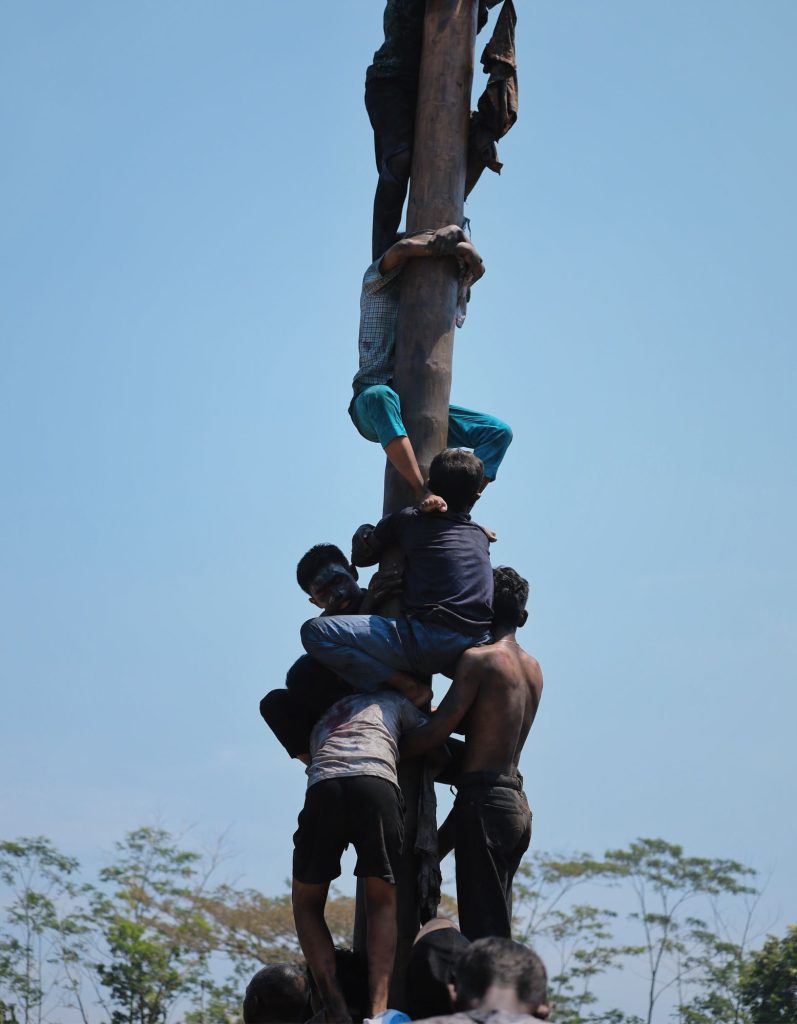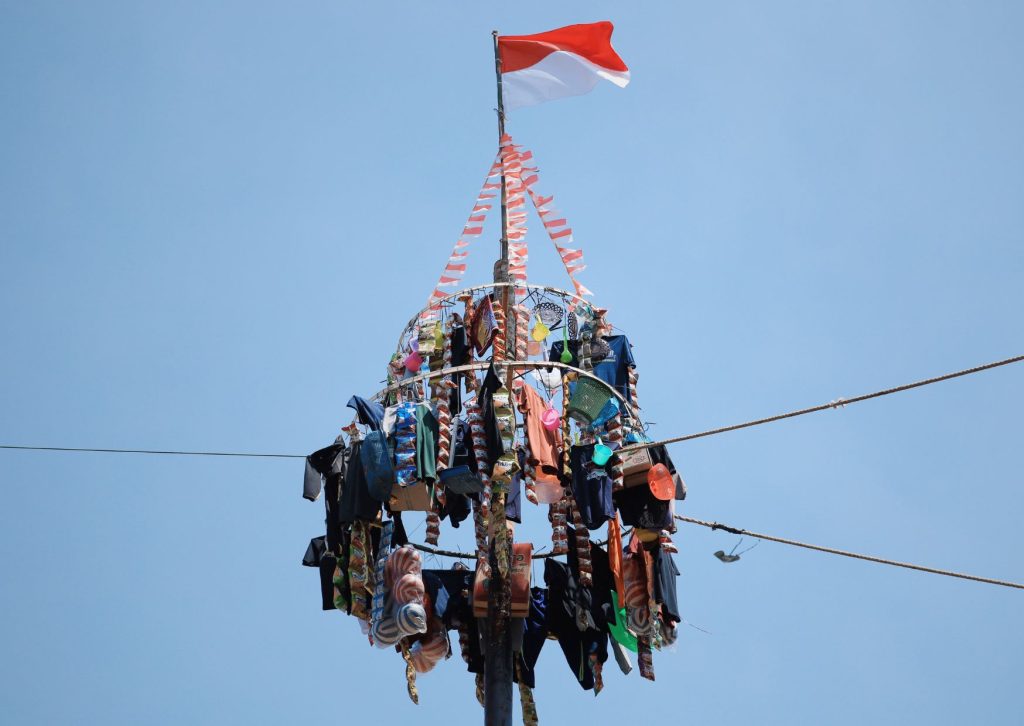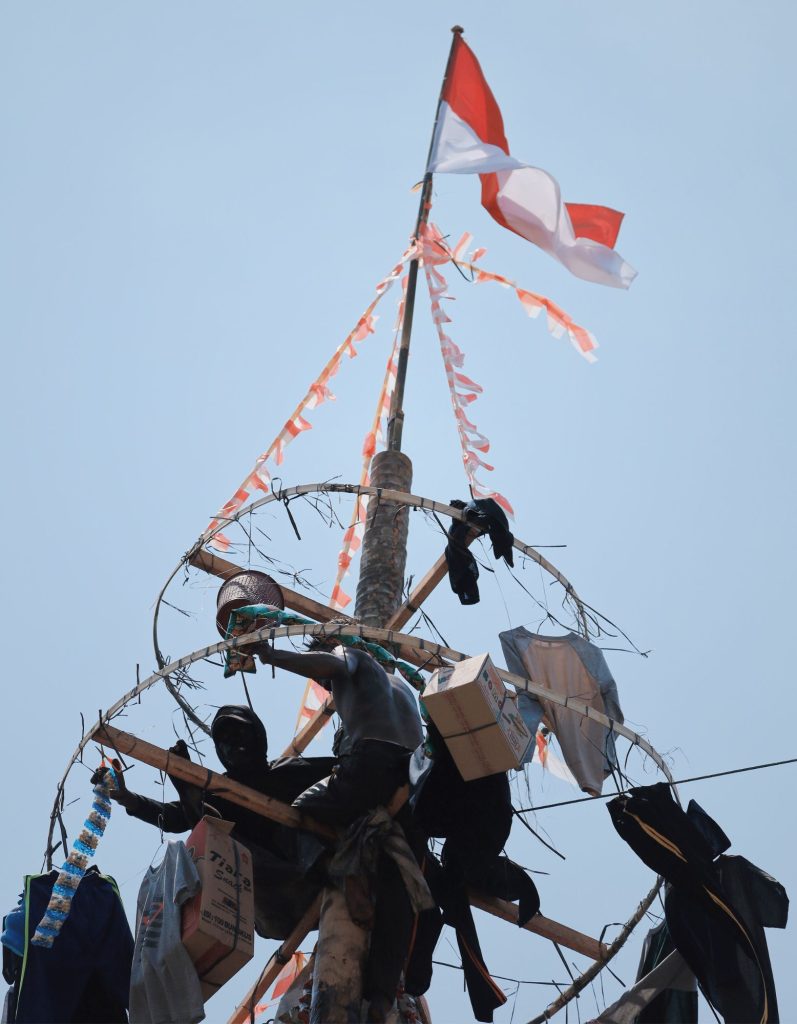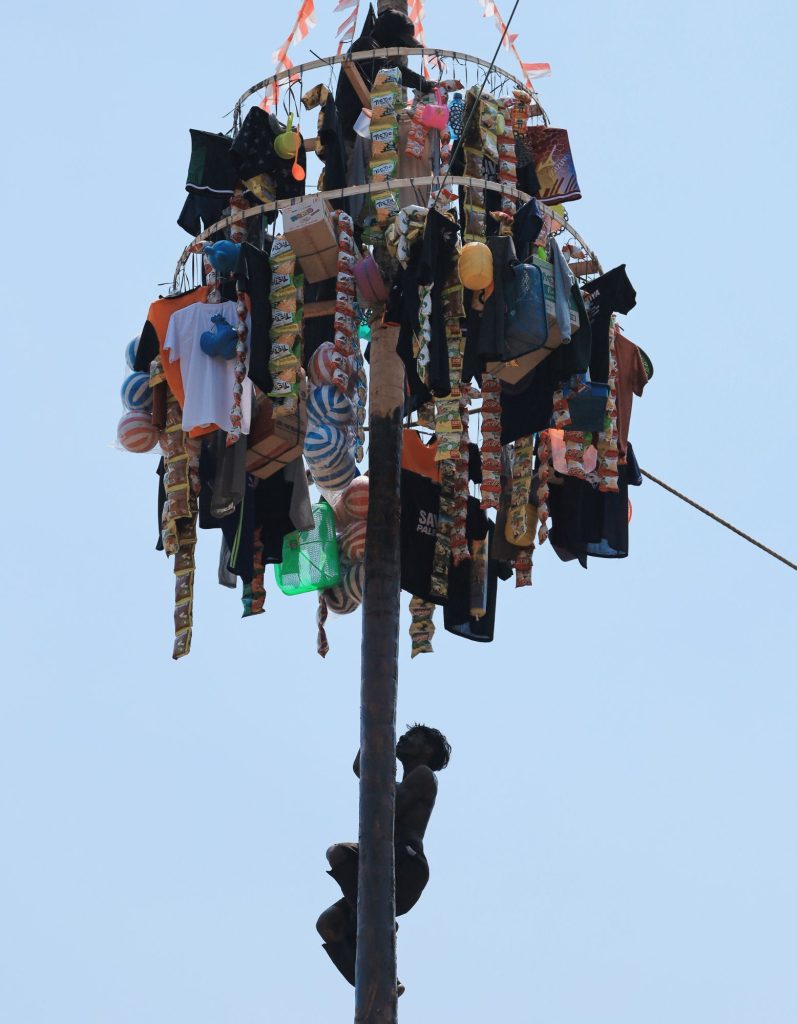Uncategorized
Panjat Pinang Competition: A Centuries-Old Tradition in Indonesia’s Independence Celebrations
The panjat pinang competition is a prominent feature of Indonesia’s Independence Day celebrations. This traditional game has existed for hundreds of years, predating Indonesia’s independence. Originally, panjat pinang was practiced during China’s Ming Dynasty as part of the Ghost Month festivities and was later used to entertain the Dutch during various celebrations.
Panjat pinang was quite popular in southern China, in regions like Fukien, Guangdong, and Taiwan. Panjat pinang, or qiang gu, was first recorded during the Ming Dynasty (1358-1644). It was part of the Ghost Festival during the Ghost Month (gui yue). However, it was banned during the Qing Dynasty (1636-1912) due to the many casualties it caused. The competition was revived by the Japanese when they occupied Taiwan in 1895. In Indonesia, the Ghost Month is known as Cioko. During Cioko celebrations, panjat pinang stages were set up in some areas of Java. The Betawi people also referred to panjat pinang as Coko.

Panjat pinang became a popular tradition in the mid-19th century. During the Dutch East Indies era, it was used to commemorate Queen’s Day (Koninginnedag), held every August 31st to mark the birthday of Queen Wilhelmina Helena Pauline Marie van Orange-Nassau of the Netherlands. The Dutch called this competition “de Klimmast,” and it became a source of entertainment for the Dutch during the colonial period. Panjat pinang was also held during weddings, birthdays, and job promotions. The competition was not only organized by the Dutch but also by wealthy indigenous people.

Panjat pinang was only participated in by indigenous people, who were divided into several teams. Each team would try to climb an 8-10 meter tall areca tree smeared with lubricating oil, making it slippery. At the top of the tree, various prizes were hung, including bread, chocolate, sugar, rice, milk, and clothes. At that time, these prizes were considered very valuable and were luxury items for the indigenous people. The game required good strategy and teamwork. The participants would work together in a team to reach the top and grab the prizes. The Dutch spectators would laugh as they watched the indigenous people struggle to reach the prizes at the top of the areca tree.

To this day, panjat pinang is still used as a competition during independence celebrations. However, the prizes are more varied, including bicycles, shoes, snacks, household items, and more. Panjat pinang is considered an adult game, usually played by men. Each team consists of 6-8 people. The competition is becoming rare and difficult to find, especially in urban areas.
The panjat pinang competition reflects the character of the Indonesian people as a collective society. In this competition, teamwork determines victory. The competition cannot be done individually and can only succeed if done in a group. This mirrors the struggle of the country’s heroes, who fought together for independence from colonialism. If the prizes hanging at the top of the areca tree symbolize the independence to be achieved, the Indonesian people must work together to reach these prizes.
References:
Malagina, A. (2019, August 29). Perlombaan panjat pinang berakar dari tradisi pecinan Nusantara. National Geographic Indonesia. Retrieved from https://nationalgeographic.grid.id/read/131834825/perlombaan-panjat-pinang-berakar-dari-tradisi-pecinan-nusantara?page=all
Setya, D. (2022, August 7). Sejarah dan filosofi panjat pinang, lomba seru saat perayaan 17 Agustus. Detik.com. Retrieved from https://www.detik.com/edu/detikpedia/d-6220058/sejarah-dan-filosofi-panjat-pinang-lomba-seru-saat-perayaan-17-agustus


